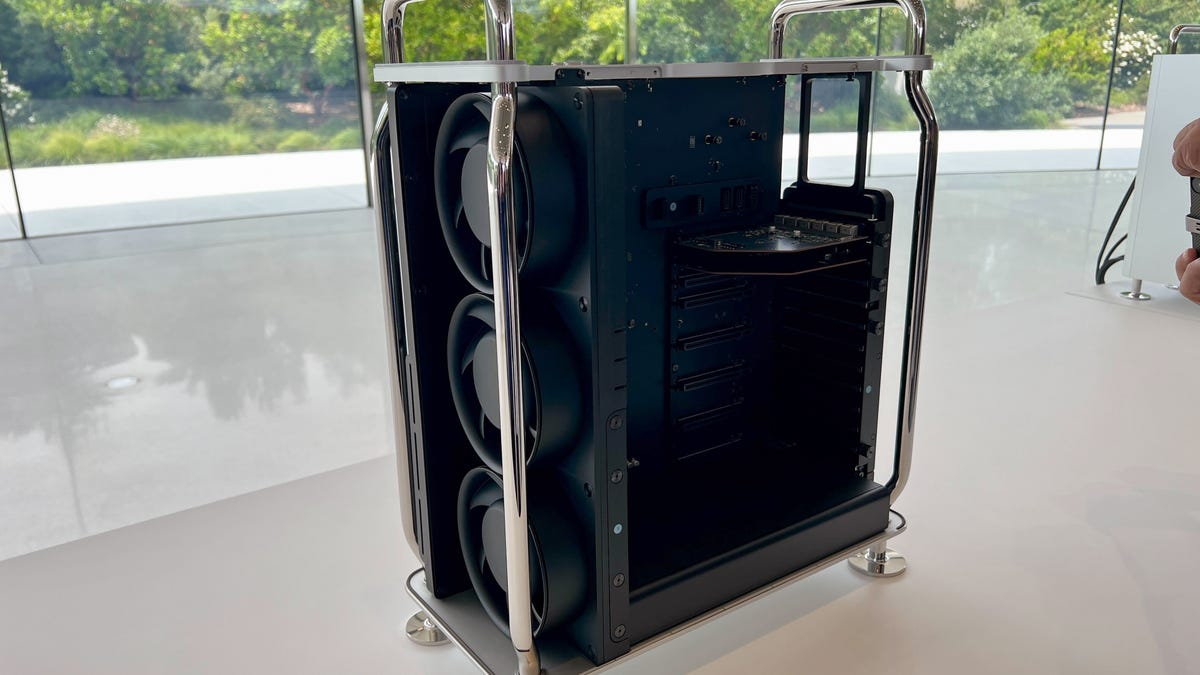 Why You Can Trust CNET
Why You Can Trust CNET Apple Silicon Is the Mac Pro Upgrade You've Been Waiting For
The company's power pro desktop goes to the top of the Apple silicon heap with the new M2 Ultra chip.

Apple's serious modular pro desktop gets its first real update since 2019, incorporating the new M2 Ultra chip announced at WWDC 2023. The move finally completes Apple's transition of its hardware to its own CPUs, which not only brings the system into line with the rest of its laptops and desktops, but seems to make significant cost savings possible as well.
The system starts at $6,999 -- $1,000 higher than the former Intel Xeon model's base price was at launch -- but the top configuration maxes out at around $12,000, far lower than the Xeon's top configuration had been. Not having to pay for Intel's CPU or AMD's Radeon graphics cards, as well as removing the necessity of one or more Afterburner cards at $2,000 a pop (for accelerating ProRes and ProRes Raw video transcoding), probably helps cuts a lot from the cost of upgraded configurations.
The Ultra is a pair of M2 Max chips tied together, delivering a 24-core CPU, 60- or 76-core GPU and 32-core neural engine. But there's also a $1,000 difference between the 60- and 76-GPU core versions of the M2 Ultra chips Apple offers for its configuration options. In practice, that's a lot more performance over the antiquated Xeon in the old version and means support for more high-res displays. It also means support for more modern standards, like PCI Gen 4, Wi-Fi 6E and Bluetooth 5.3.
Finally moving to Apple silicon from the out-of-date (circa 2019) Xeon chips also means Apple could integrate two HDMI 2.1 ports -- HDMI 2.1 first arrived for Apple in the MacBook Pro 16. The system can support up to 192GB of unified memory and has eight Thunderbolt 4 ports.
More from WWDC 2023
One irony of the M2 Ultra upgrade, though, is that Apple has essentially made the Mac Pro less modular, which was the reason everyone clamored for it to begin with. Apple has integrated all the options that traditionally were added via the PCI bus (an Apple I/O card still comes in the four-channel PCI 3 slot). It doesn't look like you can use a discrete AMD GPU or the GPU MPX modules of the old model; being able to upgrade the GPU is one of the big reasons why modularity is important.
That's not to say you won't ever be able to do it. For all we know, Apple is just pretending you can't for now (or waiting for someone to try it before admitting it's possible), or plans to enable GPU add-on cards or modules via a firmware upgrade at some point. Because no matter how powerful a GPU is, the type of tasks you perform on a workstation can always benefit from more -- if not right now, then in a couple years.
You can read the play-by-play of the announcement in the archive of our live blog.

